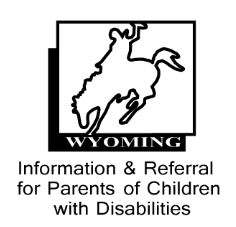Types of Hearing Loss
There are 4 basic types of hearing loss:
- Conductive Hearing Loss is caused by problems in the outer and/or middle ear. This type of hearing loss may be permanent or temporary. It can often times be medically or surgically corrected.
- Sensorineural Hearing Loss is caused by problems in the cochlea and/or inner ear. This is a permanent type hearing loss that usually cannot be medically or surgically corrected.
- Mixed Hearing Loss is a combination of Conductive and Sensorineural hearing loss.
- Central Auditory Processing Disorder is a condition where auditory signals are not processed by the brain. The child can “hear” sound, but cannot understand what is being heard. The child’s peripheral mechanisms are working, but the information does not reach the brain in a typical or efficient manner.
There are several degrees of hearing loss, ranging from mild to severe.
It is possible to have a hearing loss in only one ear (unilateral hearing loss)’” or in both ears (bilateral hearing loss).
The Scale of Hearing Loss:
-10 to 15 dB
Normal Hearing
16 to 25 dB
Minimal Hearing Loss
26 to 40 dB
Mild Hearing Loss
41 to 55 dB
Moderate Hearing Loss
56 to 70 dB
Moderately Severe Hearing Loss
71 to 90 dB
Severe Hearing Loss
91 + dB
Profound Hearing Loss
The following is an example of the ability of the brain to hear speech with a hearing loss:
Normal Hearing
Freddie
thought
he
should
find
a
whistle
Mild Hearing Loss
Freddie
though-
-e
‘”ould
-ind
a
whi’”le
Moderate Hearing Loss
-reddie
‘”ough-
-e
‘”ould
-i’”
a
‘”i’”le
Severe Hearing Loss
‘”e’”ie
‘”ou’”
-e
‘”ou’”
-i’”
a
‘”i’”le
Profound Hearing Loss
LOUDsoft
LOUD
soft
soft
LOUD
soft
LOUDsoft
A child may “hear” some sounds, but not hear all the sounds they need to in order to understand. Below are possible impacts hearing loss may have on understanding language and speech:
16-25 dB Hearing Loss:
- Compared to the ability to hear when index fingers are placed in ears.
- Difficulty hearing faint or distant speech.
- At 16 dB hearing loss, child can miss up to 10% of speech signal when speaker is at a distance greater than 3 feet. Percentage of speech missed will be greater whenever there is background noise.
26-40 dB Hearing Loss:
- Greater listening difficulties than a “plugged-ear” hearing loss.
- Child can “hear” but misses fragments of speech leading to misunderstandings.
- At 30 dB hearing loss child can miss up to 25-40% of speech signal.
- At 40 dB child may miss 50% of classroom discussions.
- Often experiences difficulty learning early reading skills such as letter/sound associations.
41-55 dB Hearing Loss:
- At 50 dB hearing loss child may miss up to 80% of speech signal.
- Without early amplification, the child is likely to have delayed or disordered syntax, limited vocabulary, imperfect speech production, and flat voice quality.
- Even with hearing aids, if there is background noise, the child will miss much of what is being said.
56-70 dB Hearing Loss:
- Without amplification, a 55 dB hearing loss can cause a child to miss up to 100% of speech information.
- If hearing loss is not identified and appropriately managed before child is one year of age, it is very likely for child to have delayed spoken language, syntax, reduced speech intelligibility and flat voice quality.
- The age at which amplification begins, consistency of hearing aid use and early language intervention is strongly tied to the success of speech, language and learning development.
71-90 dB Hearing Loss:
- Without amplification, children with 71-90 dB hearing loss may only hear loud noises about 1 foot from ear.
- The earlier the child wears amplification consistently with parents and caregivers providing language opportunities throughout everyday activities, and/or intensive language intervention (sign or verbal) put into place, the greater the child’s chances are that speech, language and learning will development at a relatively normal rate.
- Individual ability and intensive intervention prior to 6 months of age will determine the degree that sounds detected will be understood by the brain into meaningful input.
- A child with hearing loss greater than 70 dB may be a candidate for cochlear implants; A child with hearing loss greater than 90 dB will not be able to perceive most speech sounds with traditional hearing aids. (Provided by Karen Anderson)
Suggestions For Speech and Language Development of Children with Middle Ear Problems and/or Hearing Loss:
- The Importance of Talking… Talking to your child is important for his/her language development. Since children usually imitate what they hear, how much you talk to your child, what you say, and how you say it will affect how much and how well your child talks.
- Look… Look directly at your child’s face and wait until you have his/her attention before you begin talking.
- Control Distance… Be sure that you are close to your child when you talk (no farther than 5 feet). The younger the child, the more important it is to be close.
- Loudness… Talk slightly louder than you normally do. Turn off the radio, TV, dishwasher, etc. to reduce background noise.
- Be a Good Speech Model… (1)Describe to your child daily activities as they occur. (2) Expand what your child says. For example, if your child points and says “car,” you may say “Oh, you want the car.” (3) Add new information. You might add, “That car is little.” (4) Build vocabulary. Make teaching new words and concepts a natural part of everyday activities. Use new words while shopping, taking a walk, washing the dishes, etc. (5) Repeat your child’s words using adult pronunciation.
- Play and Talk… Set aside some time throughout the day for “play time” for just you and your child. Play can be looking at books, exploring toys, singing songs, coloring, etc. Talk to your child during these activities, keeping the conversation at his/her level.
- Read… Begin reading to your child at a young age (under 12 months). Ask a librarian for books that are right for your child’s age. Reading can be a calming-down activity that promotes closeness between you and your child. Reading provides another opportunity to teach and review words and ideas. Some children enjoy looking at pictures in magazines and catalogs.
- Don’t Wait… Your child should have the following skills: By 18 months of age’”3 word vocabulary; by 2 years of age’” 25 to 30 word vocabulary and several 2-word sentences; by 2 1/2 years of age ‘” at least a 50 word vocabulary and 2-word sentences consistently. If your child does not have these skills, tell your doctor. A referral to an audiologist and speech pathologist may be indicated. Hearing and language testing may lead to a better understanding of your child’s language development.




